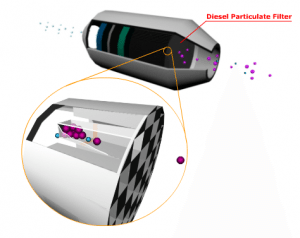You’ve probably heard that DPFs are one tool to meet emission requirements for your fleet of vehicles, but how exactly do they work?
How Do Diesel Particulate Filters Function?
A diesel particulate filter (DPF) works by trapping particulate matter, or “soot,” inside its filter. The DPF is attached to the engine’s exhaust system, and gases are forced through a canister where they must pass through a filter. The filter is designed to trap solid particular matter, allowing gases to pass through.
How DPFs Help
A diesel particulate filter can filter out as much as 95% of the particulate matter emitted by diesel engines. Many modern diesel engines come with stock DPFs, but it is common practice to retrofit fleet vehicles with DPFs as well.
Why Your Fleet Needs DPF Filters
Diesel engines, due to their combustion of diesel fuel, emit black carbon particles. These tiny particles are unhealthy for humans and the environment, and so many laws have been passed in various regions across the globe to reduce the emission of “soot” by diesel engines. For example, California made a rule in 2008 that all diesel trucks must reduce their emissions by at least 85%.
Buying new trucks with stock DFPs is one way to meet emission requirements, but installing DPF retrofits on existing trucks has proven to be a cost-effective solution for many fleet managers.
It’s also important to maintain and clean your DPFs, since old DPFs with accumulated residue can reduce your fuel economy and horsepower, even resulting in damage to your engine.
In our next FleetServ blog post, we’ll go into more detail on how to maintain your DPF filter. Check back with our blog often for more helpful tips and tricks for managing your fleet of vehicles.
